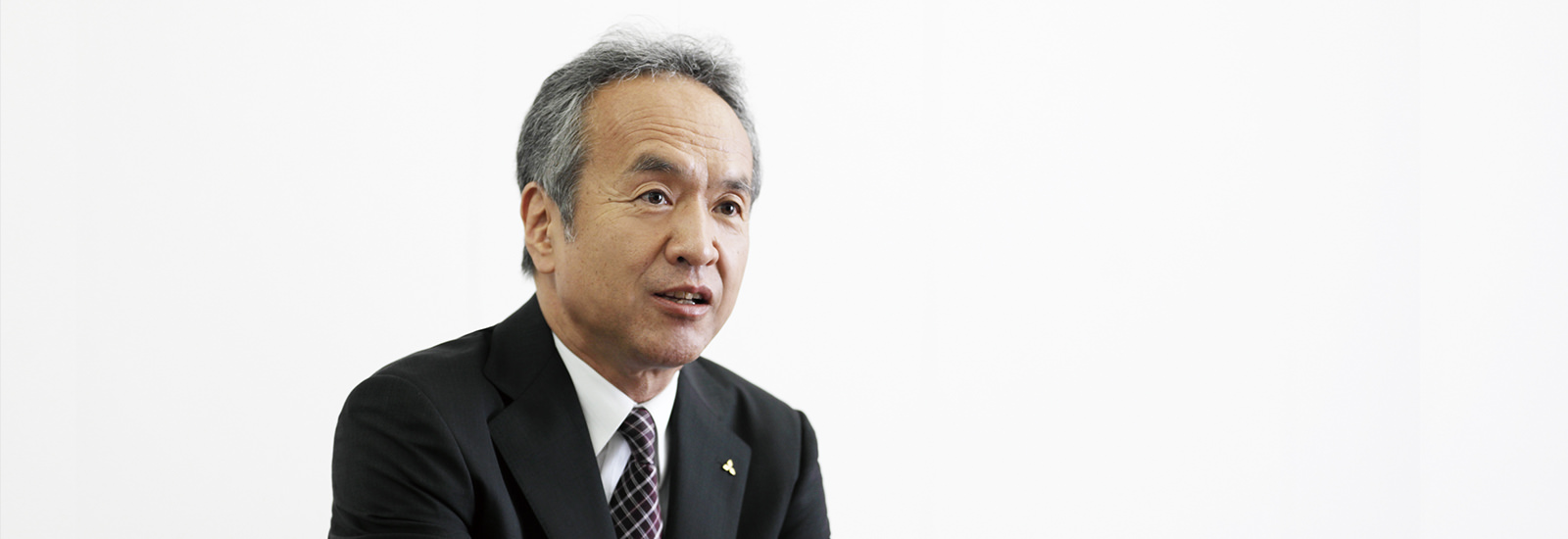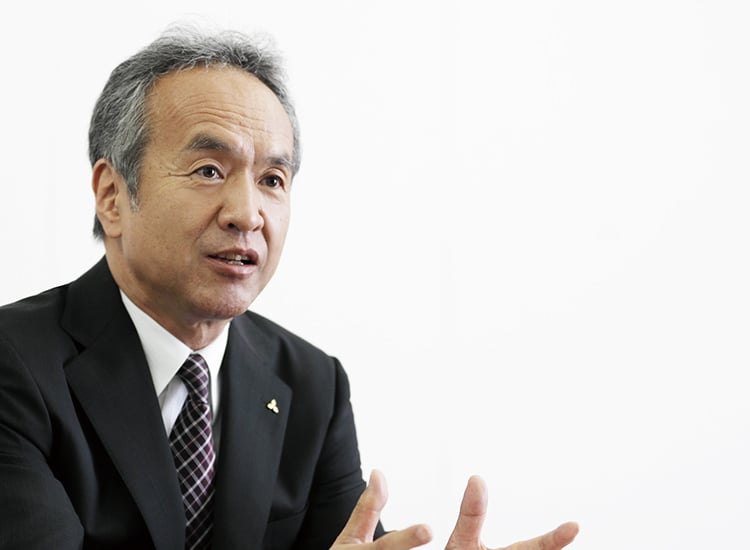CSO'S MESSAGE


Through optimal allocation of management resources, I will execute growth-oriented Group management.
Roles of the CSO
Starting in fiscal 2018, MHI Group has taken a new step in its quest to enter a sustained growth trajectory toward becoming a conglomerate with global levels of continuity and growth potential. This year, to vigorously advance growth-oriented Group management, the office of Chief Strategy Officer (CSO) was newly instituted. The duties of the CSO are to determine how to allocate and utilize Groupwide management resources, and then to play a leading role in propelling the strategies, taking market trends and social needs into consideration. In short, my core duties are to devise growth strategies and to promote globalized management.
Growth Strategies for Tomorrow
At MHI Group today, growth strategies encompass two types of initiatives: initiatives toward achieving the targets of the 2018 Medium-Term Business Plan, and initiatives taken from a medium- to long-term perspective considering the subsequent Business Plan.
With regard to the former, as CSO I closely monitor the progress being achieved toward the targets set for each SBU, confirm whether the resources needed to compete globally are being properly allocated as planned, and when necessary I promptly prepare any additional measures that are needed. In that respect, coordination with the other Chief Officers—the CFO and CTO, for example— is vital, so I communicate with them closely on a regular basis.
Regarding our longer-range initiatives, as we have set out in “MHI FUTURE STREAM,” our focus is on developing and creating new technologies, new products, and new business models that respond to current and future social challenges.
Previously, MHI Group tended to first develop technologies and then apply them in its business operations, or we made products we ourselves thought were good and supplied them to our customers. Then starting around 10 years ago, top management began striving to change such tendencies. What I aim to do now as CSO is consider what social challenges currently exist, decide into which areas we should invest our resources, and in what amounts, in order to solve those social issues, and then develop growth strategies that further integrate our technologies and our various businesses. Then, based on those growth strategies, I will continuously review and recalibrate our business portfolio.
MHI-style Global Management
In recent years, in tandem with ongoing globalization, MHI Group is increasingly establishing new Group companies individually capable of more nimble and flexible business operations. As a Group that undertakes myriad operations worldwide, with employees from backgrounds of remarkable diversity, we will pursue local management attuned to each specific location. Meanwhile, we will simultaneously strive to enhance the cohesive strength of MHI Group as a whole, in order to avail ourselves fully of the advantages we possess as a conglomerate.
Our pursuit will focus not on the Japanese-style management of the past, nor on a copy of Western-style management. Ours will be a global management style unique to MHI.
At the same time, we have aspects of our corporate culture that we want to pass on to future generations. I believe MHI should be a Group that provides safety, peace of mind, and comfort to people all around the world. Our insistence on delivering ever-better products to the customer that they can use with peace of mind—better not just in terms of monozukuri, the traditional concept of Japanese craftsmanship, but also with respect to kotozukuri, loosely translatable as value creation—and our professionalism are things we do not want to change.
I also believe that we can improve ourselves by providing new solutions and resolving issues faced by the customer through combinations of our products and services. To that end, collaboration between Group companies and crossing segment boundaries are indispensable. As an example, a variety of approaches can be taken toward today's low-carbon and carbon-free trends, such as integrating products that promote greater power generation efficiency, systems for recovering CO2, and products that use hydrogen fuel. What I aim for is to nurture a corporate culture in which, before the customer even voices a demand, we proactively propose solutions of high added value that make optimal use of the broad spectrum of our business areas.